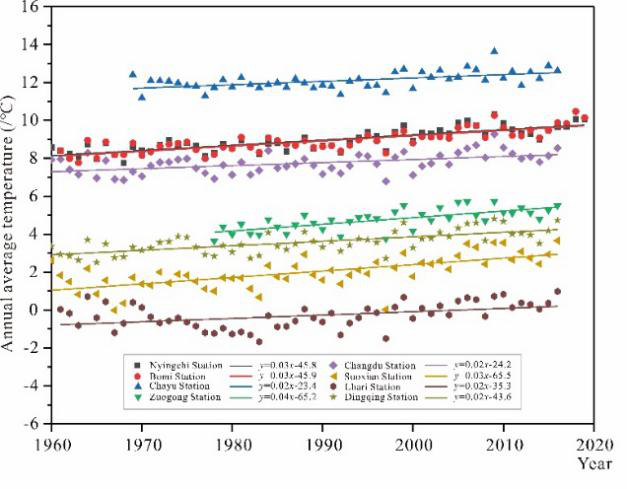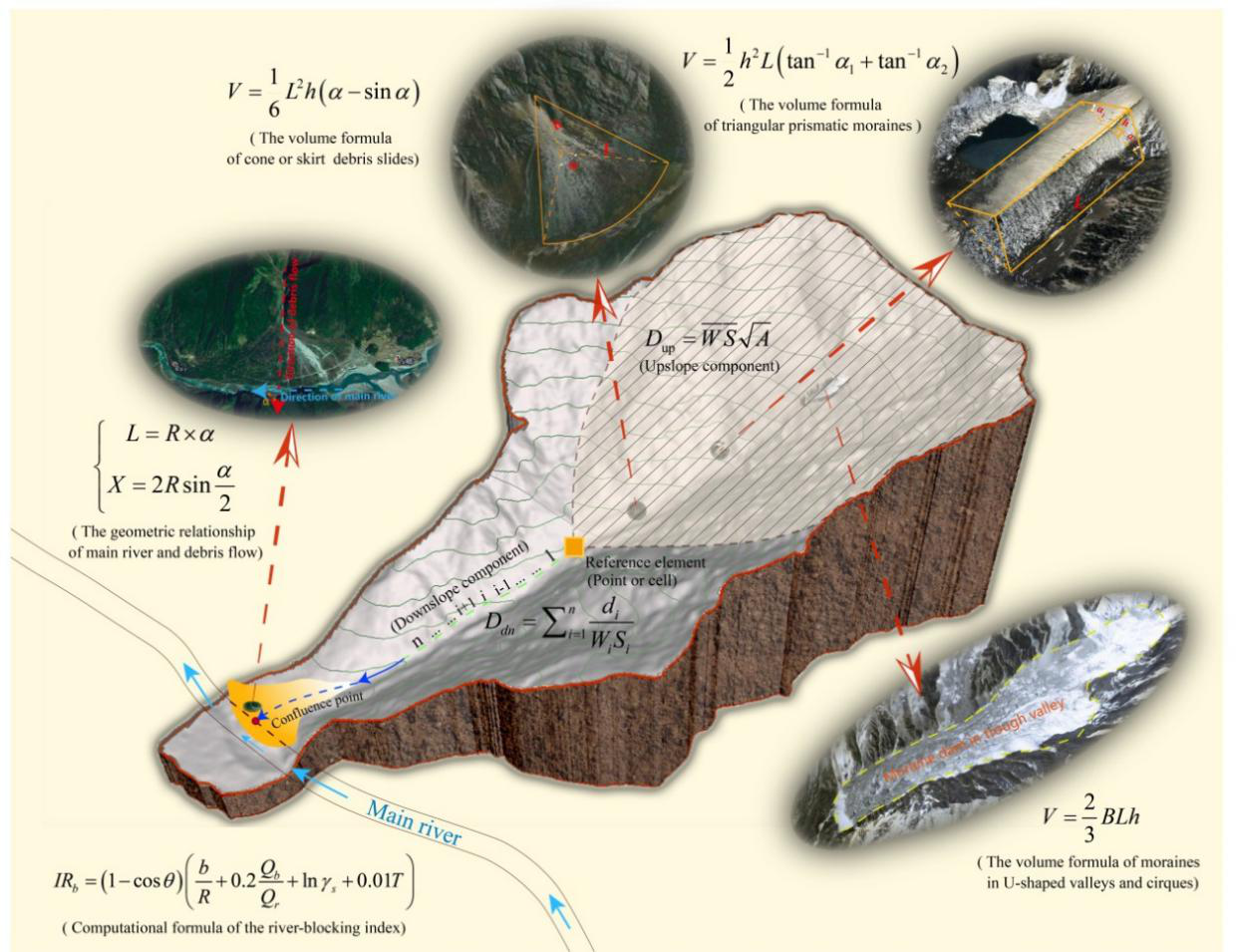This study has been was supported by the Second Tibetan Plateau Scientific Expedition and Research Program (STEP) (Grant No. 2019QZKK0902), the National Nature Science Foundation of China (Grant No. 41790432). This study entitled “analysis of regional river blockingby debris flowsin response to climate change” has been published in Science of the Total Environment.

Figure 1. Annual average temperature of national meteorological observatories at Southeast Tibet from 1960 to 2019 (Imaged by ZOU Qiang)

Figure 2. Annual rainfall of national meteorological observatories at Southeast Tibet from 1960 to 2019 (Imaged by ZOU Qiang)

Figure 3. River-blocking process and mechanism of debris flow (Imaged by ZOU Qiang)

Figure 4. River-blocking hazard assessment result of debris flow in Parlung (Imaged by ZOU Qiang)
Contact:
Prof. ZOU Qiang
Institute of Mountain Hazards and Environment, Chinese Academy of Sciences
Chengdu, Sichuan, 610041, China
Tel: 86-13688061027
E-mail: zouqiang@imde.ac.cn
